The post Creating a Cozy Living Room: Tips for Comfort and Style appeared first on FWD Life | The Premium Lifestyle Magazine |.
]]>Choose the Right Furniture
Start with furniture that combines comfort and functionality. Opt for a plush sofa with deep cushions, perfect for lounging. Consider adding a cozy armchair or a recliner for additional seating. Make sure the furniture arrangement promotes conversation and allows for easy movement throughout the room.
Layer Your Lighting
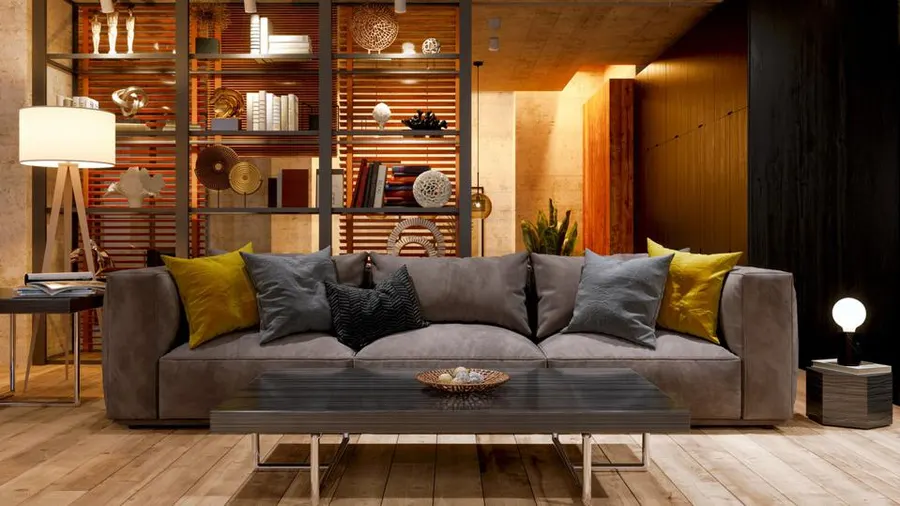
Lighting plays a crucial role in setting the mood. Use a mix of lighting sources to create a warm ambiance. Combine overhead lights with floor lamps, table lamps, and wall sconces. For added coziness, incorporate dimmers or smart bulbs that let you adjust the brightness to suit different times of day and activities.
Add Textures with Throws and Pillows
Textures are key to a cozy living room. Layer different fabrics, such as soft throw blankets, plush pillows, and textured rugs. Choose fabrics like wool, velvet, and cotton that add warmth and comfort. Mix and match patterns and colors to create visual interest and a personalized touch.
Incorporate Warm Colors
Color influences the feel of a room. Opt for warm, neutral tones like beige, taupe, or soft gray for a calming effect. Accents in rich colors like deep blues, earthy greens, or warm terracotta can add depth and coziness. Use these colors in your furniture, accessories, and wall decor.
Use Rugs to Define Spaces
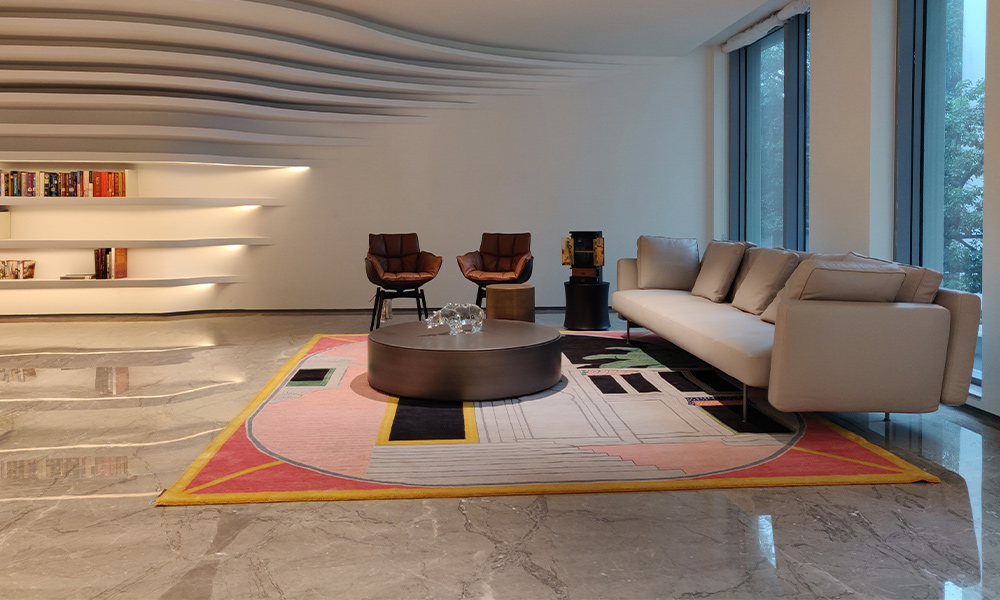
Rugs can help define different areas within a living room and add a layer of warmth underfoot. Choose a rug that complements your furniture and adds softness to the space. A large area rug can anchor the room, while smaller rugs can be used to highlight specific areas, like a reading nook or conversation zone.
Incorporate Natural Elements
Bring the outdoors in by incorporating natural elements. Plants not only add a touch of greenery but also improve air quality and create a calming atmosphere. Choose low-maintenance plants like succulents or snake plants if you’re not an avid gardener. Wooden furniture or decor pieces can also add a natural, grounded feel to the room.
Personalize with Artwork and Décor
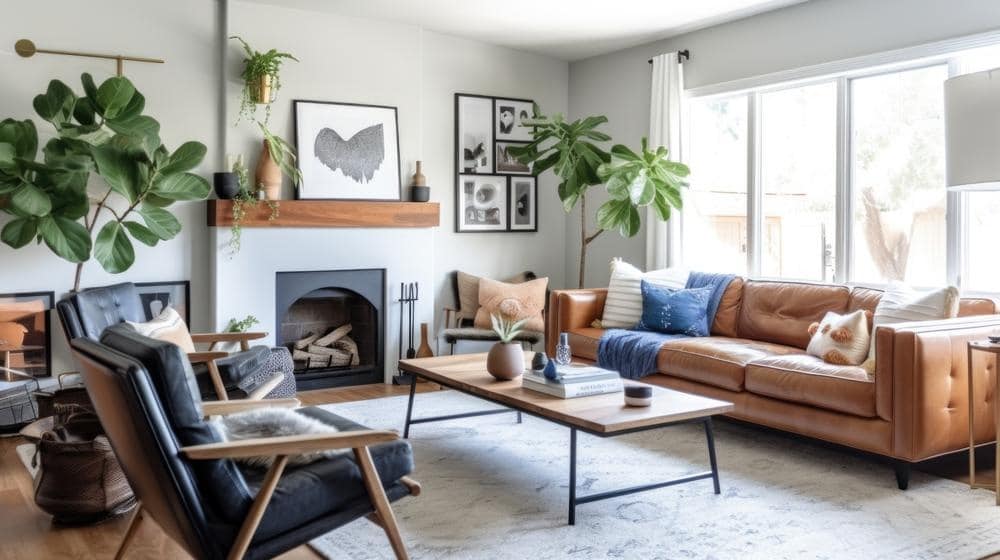
Add personality to your living room with artwork and decorative items that reflect your style. Choose pieces that resonate with you, whether it’s family photos, abstract art, or vintage finds. Arrange decor items in groups to create visual interest and avoid clutter.
Create a Focal Point
A focal point helps draw the eye and creates a sense of balance in the room. This could be a fireplace, a statement piece of art, or a stylish coffee table. Arrange your furniture and decor around this focal point to enhance the room’s overall cohesion and appeal.
Invest in Quality Window Treatments
Window treatments can impact both the look and feel of your living room. Opt for curtains or blinds that provide privacy while allowing natural light to filter through. Choose fabrics that complement your decor and add texture, such as linen or velvet.
Add Personal Touches
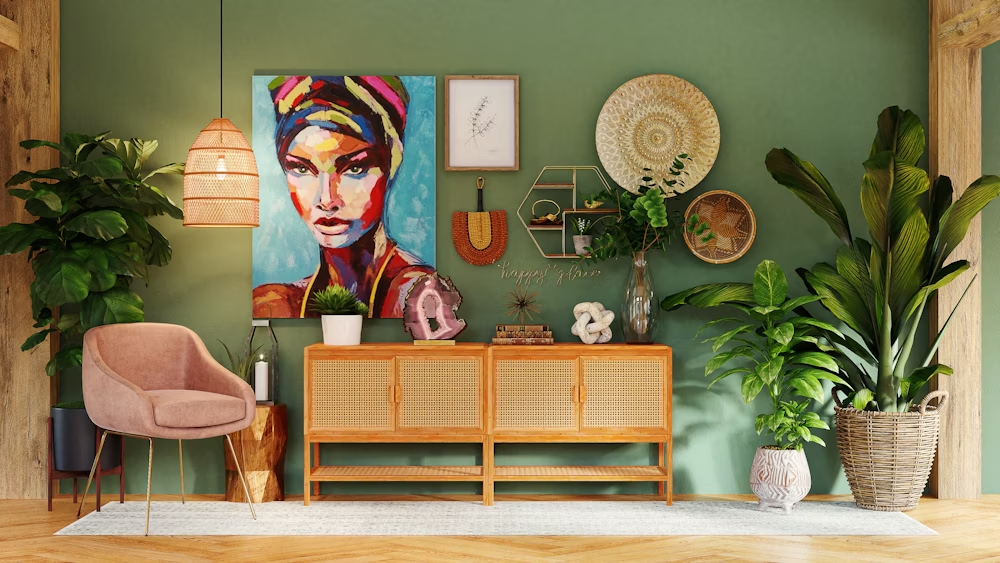
Finally, make the space truly yours by adding personal touches. Incorporate items that have sentimental value or reflect your interests and hobbies. Whether it’s a collection of travel souvenirs, a beloved quilt, or unique decorative objects, these elements will make your living room feel more inviting and personal.
By thoughtfully combining these elements, you can create a cozy living room that serves as a comfortable retreat and a stylish gathering place for friends and family. Enjoy the process of making your space uniquely yours and revel in the comfort and warmth it provides.
The post Creating a Cozy Living Room: Tips for Comfort and Style appeared first on FWD Life | The Premium Lifestyle Magazine |.
]]>The post The Art of Feng Shui: Creating Harmony in Your Home appeared first on FWD Life | The Premium Lifestyle Magazine |.
]]>Understanding the Basics of Feng Shui:
Feng Shui is based on the concept of “chi,” or life force energy, which flows through our environments and influences our well-being. The goal of Feng Shui is to create a harmonious flow of chi by arranging our surroundings in a way that promotes balance and harmony. This includes paying attention to the layout, orientation, and organization of our homes to optimize the flow of energy.
The Five Elements of Feng Shui:
In Feng Shui, there are five elements—wood, fire, earth, metal, and water—that represent different qualities and energies. By incorporating these elements into our home decor, we can create a sense of balance and harmony. For example, wood represents growth and vitality, while water symbolizes flow and abundance. By incorporating a balance of these elements into our living spaces, we can enhance the flow of positive energy and create a sense of equilibrium.
Applying Feng Shui Principles to Your Home:
Clearing Clutter: Clutter can block the flow of chi and create stagnant energy in our homes. Start by decluttering your space and getting rid of items that no longer serve a purpose. This will create space for fresh energy to flow and rejuvenate your home.
Balancing Yin and Yang: In Feng Shui, yin and yang represent the balance of feminine and masculine energies. Create a harmonious balance of yin and yang in your home by incorporating soft, nurturing elements (yin) with strong, active elements (yang).
Enhancing the Flow of Chi: Pay attention to the layout and arrangement of furniture in your home to optimize the flow of chi. Avoid placing furniture in direct line with doorways or blocking pathways, as this can disrupt the flow of energy. Instead, create open and inviting spaces that allow chi to circulate freely.
Incorporating Nature: Bring the outdoors in by incorporating elements of nature into your home decor. Plants, natural materials, and natural light can enhance the flow of chi and create a sense of vitality and well-being in your living spaces.
Room-By-Room Feng Shui Tips:
Living Room: Arrange furniture in a circular or semi-circular layout to encourage conversation and social interaction. Use soft, natural fabrics and incorporate elements of wood and fire to create warmth and intimacy.
Bedroom: Position your bed diagonally across from the door to command a clear view of the room while you sleep. Keep the space under your bed clear and clutter-free to promote restful sleep and relaxation.
Kitchen: Keep your kitchen clean, organized, and clutter-free to promote health and abundance. Incorporate elements of fire and earth, such as candles and earthy tones, to create a warm and inviting atmosphere for cooking and dining.
By incorporating the principles of Feng Shui into your home decor, you can create a harmonious and balanced living environment that supports your health, happiness, and overall well-being. Whether you’re decluttering your space, balancing yin and yang energies, or enhancing the flow of chi, the art of Feng Shui offers timeless wisdom and practical guidance for creating a sanctuary of peace and tranquility in your home.
The post The Art of Feng Shui: Creating Harmony in Your Home appeared first on FWD Life | The Premium Lifestyle Magazine |.
]]>The post 5 Sustainable Interior Design Trends to Embrace in 2024 appeared first on FWD Life | The Premium Lifestyle Magazine |.
]]>Upcycled Furniture:
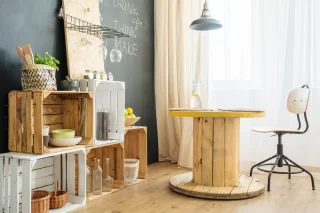
One of the most prominent sustainable interior design trends of 2024 is the use of upcycled furniture. Instead of buying new pieces, consider giving old furniture a new lease on life by refurbishing or repurposing them. From reclaimed wood tables to refurbished chairs, upcycled furniture adds character and charm to your space while reducing waste and conserving resources.
Biophilic Design:
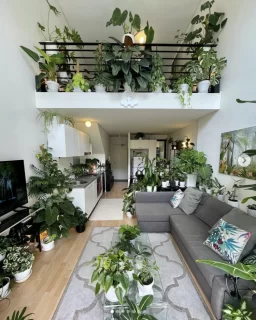
Biophilic design, which emphasizes a connection to nature, continues to gain popularity in 2024. Integrating natural elements such as plants, natural light, and organic materials into your interior design not only enhances aesthetics but also promotes well-being and sustainability. Consider incorporating living walls, indoor gardens, and sustainable wood finishes to bring the outdoors inside and create a healthier living environment.
Energy-Efficient Lighting:

With a growing focus on energy conservation, energy-efficient lighting solutions are becoming a staple in sustainable interior design. LED lights, in particular, consume significantly less energy than traditional incandescent bulbs and last much longer, reducing both energy consumption and maintenance costs. Additionally, consider incorporating natural light sources such as skylights and large windows to maximize daylight and minimize the need for artificial lighting during the day.
Sustainable Textiles:

When it comes to upholstery and soft furnishings, opting for sustainable textiles is key to reducing environmental impact. Look for fabrics made from organic or recycled materials, such as organic cotton, hemp, bamboo, or recycled polyester. These materials not only reduce the use of harmful chemicals and pesticides but also minimize waste and support eco-friendly production practices. Additionally, consider investing in durable, high-quality textiles that stand the test of time, reducing the need for frequent replacements.
Smart Home Technology:

In 2024, smart home technology continues to evolve, offering innovative solutions for sustainable living. From smart thermostats that optimize energy usage to home automation systems that control lighting and appliances, these technologies can help reduce energy consumption and increase efficiency in your home. Additionally, smart home devices such as occupancy sensors and smart meters provide valuable insights into your energy usage, empowering you to make informed decisions about resource management and conservation.
As we strive to create more sustainable living environments, embracing these five interior design trends can help reduce our environmental impact while creating beautiful and functional spaces. Whether you’re upcycling old furniture, incorporating natural elements, or investing in energy-efficient technologies, every sustainable choice contributes to a greener future for generations to come. So let’s embrace these trends and make sustainability a cornerstone of our interior design practices in 2024 and beyond.
The post 5 Sustainable Interior Design Trends to Embrace in 2024 appeared first on FWD Life | The Premium Lifestyle Magazine |.
]]>The post Designing a Functional Home Office: Tips for Productivity and Comfort appeared first on FWD Life | The Premium Lifestyle Magazine |.
]]>Choose the Right Location
Select a quiet and well-lit area in your home that is conducive to work. Ideally, this space should be away from distractions like heavy foot traffic or noise from common areas.
Invest in Ergonomic Furniture
Your office chair and desk are vital components of your workspace. Invest in ergonomic furniture that promotes good posture and reduces the risk of discomfort or injury during long hours of work.
Prioritize Natural Light
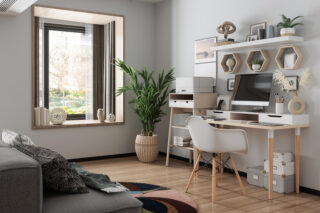
Position your desk near a window to take advantage of natural light. Natural light not only enhances mood and energy levels but also reduces eye strain and fatigue.
Declutter Regularly
Keep your workspace clutter-free by organizing cables, files, and supplies. A clean and organized environment fosters clarity of mind and helps minimize distractions.
Personalize Your Space
Incorporate elements that inspire and motivate you, such as artwork, plants, or motivational quotes. Personalizing your space can boost creativity and make your home office feel more inviting.
Optimize Technology Setup
Ensure that your technology setup including your computer, monitor, keyboard, and mouse is optimized for efficiency and comfort. Consider investing in accessories like an adjustable monitor stand or a wireless keyboard and mouse for added flexibility.
Incorporate Greenery
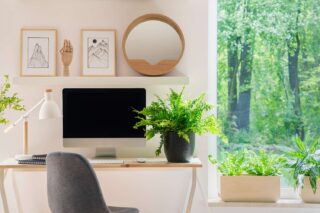
Introduce plants into your home office to improve air quality and add a touch of nature to your space. Plants not only enhance aesthetics but also have been shown to reduce stress and increase productivity.
Create a Distraction-Free Zone
Minimize distractions by setting boundaries with family members or roommates and establishing specific work hours. Consider using noise-canceling headphones or a white noise machine to block out unwanted sounds.
By implementing these tips, you can design a home office that promotes productivity, creativity, and overall well-being. Remember that every individual’s needs and preferences are unique, so feel free to experiment and adjust your workspace to suit your specific requirements. With a well-designed home office, you’ll be better equipped to tackle your tasks with focus, efficiency, and comfort.
The post Designing a Functional Home Office: Tips for Productivity and Comfort appeared first on FWD Life | The Premium Lifestyle Magazine |.
]]>The post A Guide to Choosing the Perfect Colors for Your Home Interior appeared first on FWD Life | The Premium Lifestyle Magazine |.
]]>Consider the Mood You Want to Create:
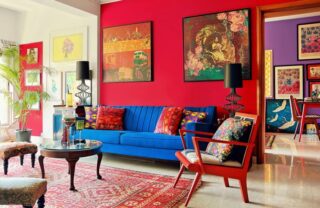
The first step in choosing the right colors for your home interior is to consider the mood or atmosphere you want to evoke in each room. Do you prefer a calming and serene space, or are you looking for something more vibrant and energizing? Think about how you want to feel when you’re in each room and choose colors that align with those emotions.
Take Lighting into Account:
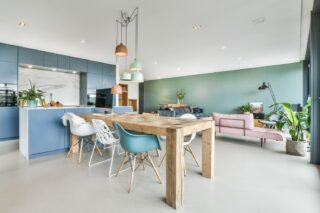
Lighting plays a crucial role in how colors appear in a room. Natural light can enhance certain hues while making others appear dull. Consider the direction and intensity of natural light in each room when choosing paint colors. Rooms with ample natural light can handle bold and vibrant colors, while those with less light may benefit from softer, lighter shades.
Create a Cohesive Color Scheme:
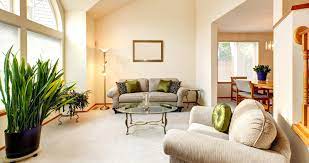
To ensure a cohesive flow throughout your home, choose a consistent color scheme that ties all the rooms together. You can achieve this by selecting a few key colors and using them in different combinations throughout the house. Neutral colors like whites, grays, and beiges make excellent base tones, while accent colors can add pops of personality and interest.
Explore Color Psychology:

Color psychology can help you understand how different colors can affect mood and behavior. For example, blue is often associated with calmness and tranquility, making it an excellent choice for bedrooms and bathrooms. Yellow, on the other hand, can evoke feelings of happiness and energy, making it ideal for kitchens and living areas. Consider the psychological effects of each color when making your choices.
Test Paint Samples:
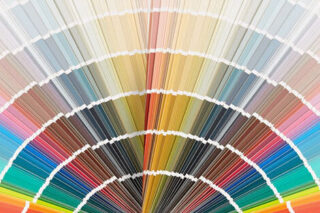
Before committing to a color for your walls, it’s essential to test paint samples in the actual space. Paint a small section of the wall with your chosen colors and observe how they look throughout the day in different lighting conditions. This will help you make an informed decision and ensure that you’re happy with the final result.
Don’t Forget About Accents and Accessories:
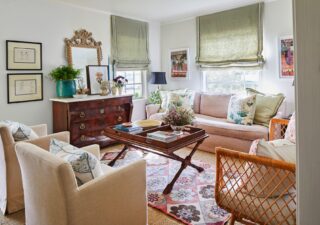
In addition to wall colors, consider how accent pieces and accessories can complement your chosen color scheme. Throw pillows, rugs, curtains, artwork, and furniture upholstery can all add depth and dimension to your space while tying the room together visually.
Choosing the right colors for your home interior is a personal and creative process that can transform your living space into a place you love to call home. By considering the mood you want to create, taking lighting into account, creating a cohesive color scheme, exploring color psychology, testing paint samples, and incorporating accents and accessories, you can design a home that reflects your unique style and personality. So, let your creativity flow, and enjoy the process of bringing your vision to life!
The post A Guide to Choosing the Perfect Colors for Your Home Interior appeared first on FWD Life | The Premium Lifestyle Magazine |.
]]>The post Kitchen trends of 2021 appeared first on FWD Life | The Premium Lifestyle Magazine |.
]]>- The Curated Kitchen
People have started gravitating toward more selected kitchen designs in recent years. The area is thoughtfully furnished with visual components such as sketches, paintings, and decorations, as well as a masterpiece of a kitchen design that makes it a gorgeous center point. A well-curated kitchen gives it a lived-in aspect, adds personality, and gives it a more personal feel. Curated looks can also help to create feelings of nostalgia and peace, so it’s no surprise that it’s one of the most popular kitchen trends today.
furnished with visual components such as sketches, paintings, and decorations, as well as a masterpiece of a kitchen design that makes it a gorgeous center point. A well-curated kitchen gives it a lived-in aspect, adds personality, and gives it a more personal feel. Curated looks can also help to create feelings of nostalgia and peace, so it’s no surprise that it’s one of the most popular kitchen trends today.
- Color Pops
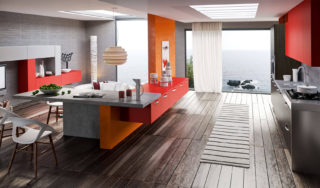
Using colors to create a modern, individualized design in the kitchen is a cost-effective and simple approach to do it. Color is bound to provide life to everything in the kitchen, including appliances, walls, and flooring. Color pops are unsurprisingly high on the list of current kitchen trends, and they’re also cost-effective if you’re planning a redesign. Colors can be used to make a kitchen look classy, joyful, vibrant, or even bold and adventurous.
- Appliances in built-in drawers
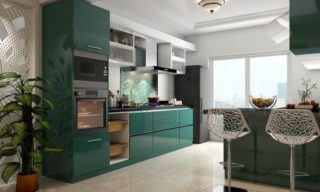
As things become more accessible and within reach, and the open shelving trend begins, appliances like shakers or blenders in drawers provide a comfortable way of working in the kitchen, especially for people who may not move around as much. As a result, appliances in drawers and open shelving will remain popular in kitchens for the foreseeable future.
- White Kitchen
 Because of the elegance and simplicity of the design features it conveys, white rooms and furnishings are always very popular. It’s no surprise, then, that white kitchens have been popular for years, especially in recent times. The color white is serene and straightforward, clean and basic, and the light was boosting, ensuring that the space never seemed drab. All of these attributes are important in a crowded space. White is also easy to change, unlike other hues, which can be tough to paint over or replace. White is also calming, which you can enhance with white natural stone worktops or light fixtures.
Because of the elegance and simplicity of the design features it conveys, white rooms and furnishings are always very popular. It’s no surprise, then, that white kitchens have been popular for years, especially in recent times. The color white is serene and straightforward, clean and basic, and the light was boosting, ensuring that the space never seemed drab. All of these attributes are important in a crowded space. White is also easy to change, unlike other hues, which can be tough to paint over or replace. White is also calming, which you can enhance with white natural stone worktops or light fixtures.
- Kitchen Islands
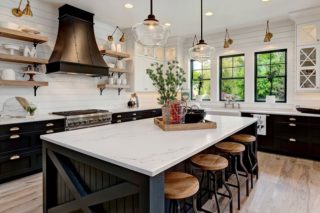
Due to their elegant and sumptuous appearance, double islands have always been popular in kitchen designs and will continue to be so in the future. Though twin layouts can be costly, they are worth considering if the budget allows. Dual setups are highly recommended for large, open-plan kitchens, and may even be considered a need.
Words by: Malavika Venugopalan
The post Kitchen trends of 2021 appeared first on FWD Life | The Premium Lifestyle Magazine |.
]]>The post 6 Most Popular Interior Design Styles appeared first on FWD Life | The Premium Lifestyle Magazine |.
]]>Here are few trends on different bedroom styles that can help make you, your own perfect world,
Combined Space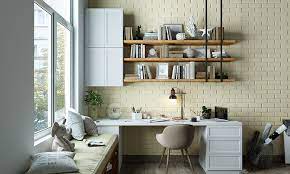
Due to Covid-19, we have work-from home policy right now. As a result, a study table is required in your bedroom. It doesn’t have to be something spectacular; it can be plain and sleek. However, in the bedroom, this is a must-have.
Greenery in room
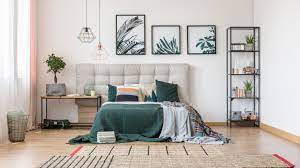 Since we’ll be home for quite a while now, it is important to keep our space Eco- friendly and refreshing. As a result, people are making their homes more environmentally friendly. Green spaces are in high demand, from interior plants to balcony gardens, kitchen plants to hanging plants.
Since we’ll be home for quite a while now, it is important to keep our space Eco- friendly and refreshing. As a result, people are making their homes more environmentally friendly. Green spaces are in high demand, from interior plants to balcony gardens, kitchen plants to hanging plants.
Minimalist Decor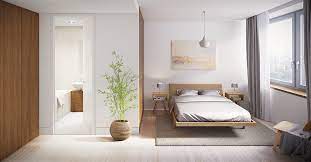
Reduce your furniture to exactly what is absolutely essential. There’s no need to overstock your bedroom with unnecessary goods. Cluttering the room with more furniture and decors will make it look like a closed space, which is not fun to be in.
Colors
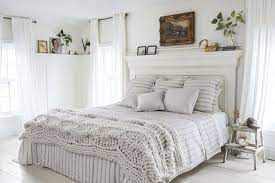 You can keep your room color muted to make it more minimalistic. The best option is to use a plain white color. You can simply use wallpaper or textured paint on one wall, and can generate some aspects in the space. This appears to be both fashionable and stylish. Using dark colors makes your room darker and can cover up the sunlight coming into your room.
You can keep your room color muted to make it more minimalistic. The best option is to use a plain white color. You can simply use wallpaper or textured paint on one wall, and can generate some aspects in the space. This appears to be both fashionable and stylish. Using dark colors makes your room darker and can cover up the sunlight coming into your room.
Lighting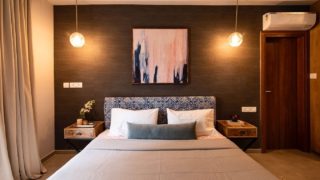
One of the biggest game-changers will be lighting. Let’s embrace natural light. As a result, make room for large windows and fewer walls. Allow as much natural light as possible. Place a large floor lamp in one of the reading areas, and this will help.
Your own space
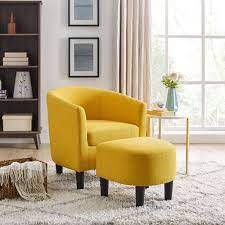 The bedroom is your own space. But having a corner of that bedroom where you can meditate or read books is very important. So reserve a space in your room for this purpose. Keep a small stool or a bedroom chair anything of your choice in a corner of your room.
The bedroom is your own space. But having a corner of that bedroom where you can meditate or read books is very important. So reserve a space in your room for this purpose. Keep a small stool or a bedroom chair anything of your choice in a corner of your room.
Follow these trends and create a magical world in your room!!!
Words by: Malavika Venugopalan
The post 6 Most Popular Interior Design Styles appeared first on FWD Life | The Premium Lifestyle Magazine |.
]]>The post Printing Your Home Is Now A Reality appeared first on FWD Life | The Premium Lifestyle Magazine |.
]]>
The Dutch couple, Elize Lutz and Harrie Dekkers have become part of the innovation story by becoming the first official tenants of “ the world’s first commercial housing project based on 3D-concrete printing ” as the company claims. They received the digital key to the house – an app allowing them to open the front door at the push of a button and are all set to move on August 1. Located at Eindhoven, in the southern Netherlands is a quaint boulder-shaped structure that in its organic form creates a sense of balance and harmony in nature.
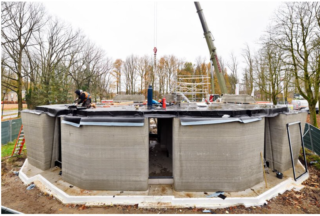
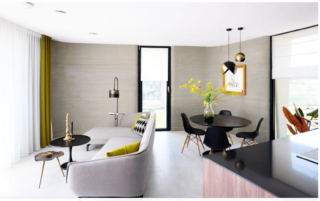



The single-story building with a spacious two-bedroom configuration is the first of five houses planned by the company Project Milestone, a joint construction, and innovation project from the Eindhoven University Of Technology. The house consists of 24 concrete elements, that are built layer by layer in a structure and, after completion, are moved to the desired location and placed on a foundation. This paves the way to the sustainability of the future where a growing population and millions of homeless won’t be a problem to accommodate.
The post Printing Your Home Is Now A Reality appeared first on FWD Life | The Premium Lifestyle Magazine |.
]]>The post Indian architect B V Doshi wins Pritzker Architecture Prize appeared first on FWD Life | The Premium Lifestyle Magazine |.
]]>Text Credit: Shibul Pavithran
Indian legendary architect Balkrishna Vithaldas Doshi is being honoured with Nobel equivalent, the Pritzker Architecture Prize, an announcement was made on Wednesday. The Pune based architect, who is 90 years old, will be the first Indian to get the honour. Doshi came from a family of furniture makers, and in one interview he credited his early architecture inspiration to his grandfather’s house, upon which new levels were repeatedly added to accommodate a large joint family of three uncles and their families. He is an alumnus of the JJ School of Architecture in Mumbai.
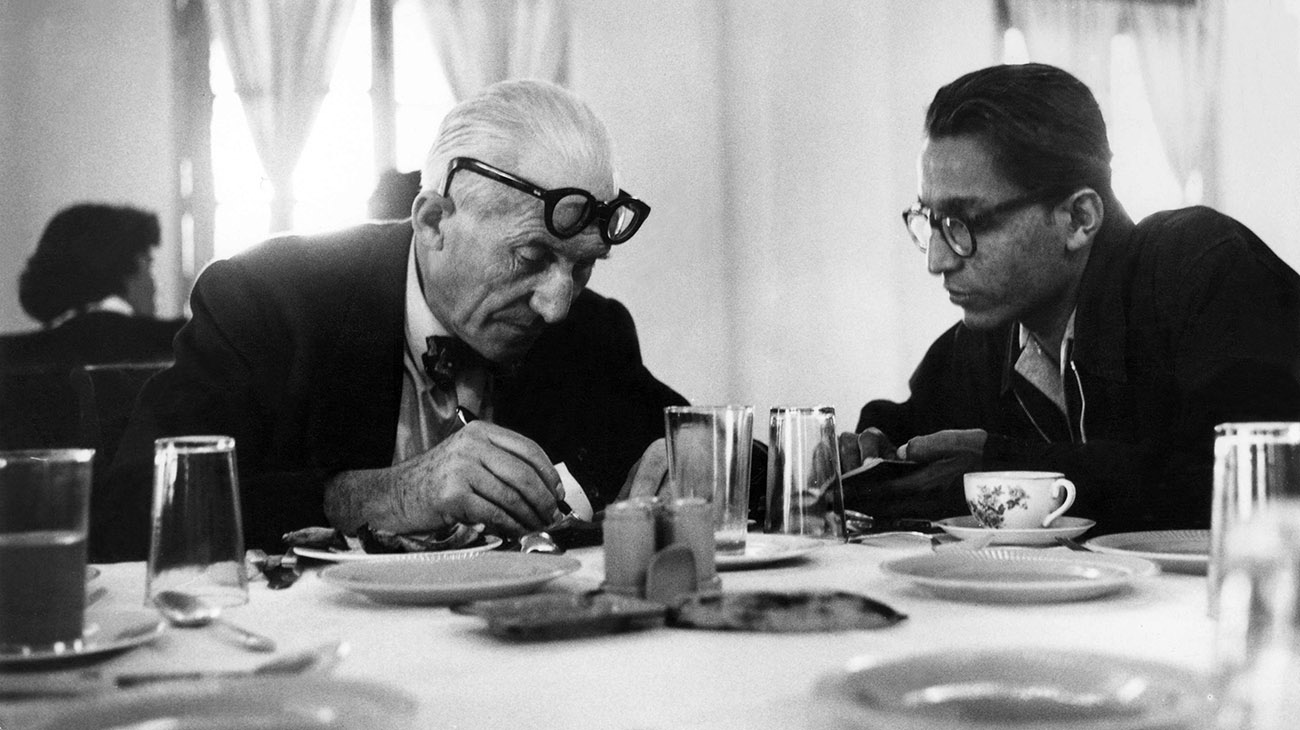
Image Source: BV Doshi with Le Corbusier
“I owe this prestigious prize to my guru, Le Corbusier,” said Doshi, adding, “His teachings led me to question identity and compelled me to discover new regionally adopted contemporary expression for a sustainable holistic habitat.”Doshi did his architectural apprenticeship under Le Corbusier in his Paris atelier. To this day, at the entrance of his cabin, Doshi keeps a portrait of the Swiss architect next to representations of Goddess Durga and Lord Ganesha.
He describes architecture as an extension of the body, and his ability to attentively address function while regarding climate, landscape, and urbanization is demonstrated through his choice of materials, overlapping spaces, and utilization of natural and harmonizing elements.
“Balkrishna Doshi has always created an architecture that is serious, never flashy or a follower of trends. With a deep sense of responsibility and a desire to contribute to his country and its people through high quality, authentic architecture, he has created projects for public administrations and utilities, educational and cultural institutions, and residences for private clients, among others,” the Pritzker jury said.
” Its a much-deserved recognition that has come to Prof. Doshi, though long overdue. Early this year we had a meeting with him at ‘Sangath’, his office in Ahmedabad, during which he wanted us to show him a few of our works and while doing so, he sat through it with a twinkle in his eyes. What amazed us the most was the childlike enthusiasm with which he spoke to us about our project and what in it interested him the most. Its hard to tell that he just turned 90 last year, looking at the energy he carries with him.
‘Paths Uncharted’, the autobiography, takes us on an exciting journey and is a must-read for anyone who would like to understand the enigma called Balakrishna Doshi,” said Lijo Jos and Reny Lijo. (A well-known architect firm from Thrissur, Kerala)
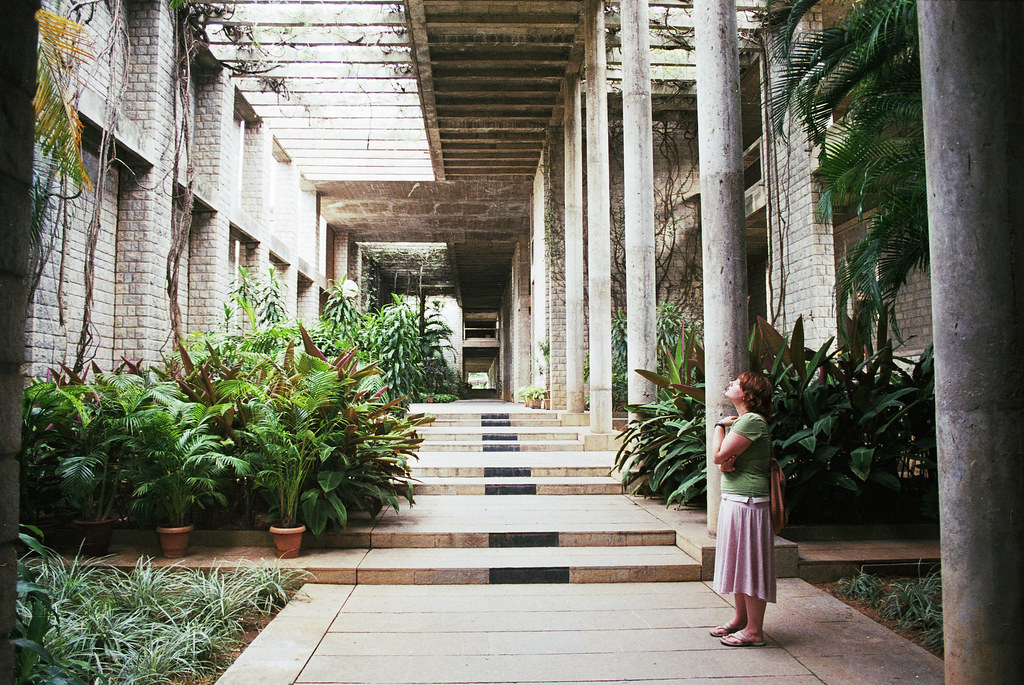
He is known as an institution builder. Doshi worked with another towering figure of modernism, American architect Louis Kahn on the Indian Institute of Management-Ahmedabad (IIM-A). Doshi also designed IIM in Bangalore and Lucknow, the National Institute of Fashion Technology, Tagore Memorial Hall, the Institute of Indology in Ahmedabad to name a few.

Image Source: LIC Colony, Chandigarh
Doshi was significantly involved in the design of Chandigarh, the new state capital of Punjab (Chandigarh now serves as a joint state capital for Punjab and Haryana). He was tasked with designing the living spaces for the thousands of humble government servants. This gave way to his continued interest in producing the best, basic and low-cost communal spaces.
Architect B V Doshi also made an appearance in the Tamil Film O Kadhal Kanmani. One crucial portion of the film was shot at IIM Ahmedabad campus and CEPT University. Nithya Menen plays an architect in the film and renowned Indian architect Doshi plays her professor.
The post Indian architect B V Doshi wins Pritzker Architecture Prize appeared first on FWD Life | The Premium Lifestyle Magazine |.
]]>The post In the Lap of the Earth appeared first on FWD Life | The Premium Lifestyle Magazine |.
]]>Text Credits: Charishma Thankappan Image Credits: Thannal
Architecture does not just entail the construction of a building, but it is the setting up of a philosophy, thought process, values, and ideals. While conventional architectural models may be an inanimate block of concrete and cement that are ‘finished’ at the end of the erection; there are, however, alternate forms of edifices that are more alive through their symbiosis with nature. And Thannal is one such body that works for the assimilation of nature with human dwellings.
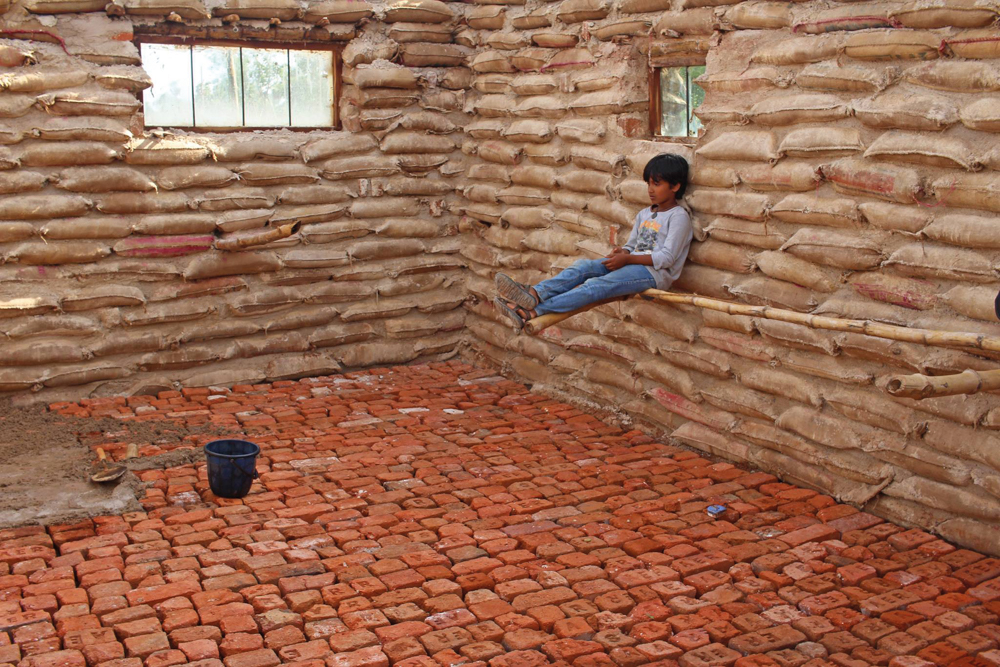
Biju Bhaskar worked in regular architecture for a long duration before quitting it ten years ago. He started Thannal in 2011 with the objective of trying to explore alternative architecture, which consists of green, sustainable, traditional, and vernacular architecture. “We do not compare our works with architecture, but we call it natural building. It’s a term that’s not well-known in the media. The natural building movement is gaining momentum internationally, but is not that progressed in Kerala,” he says. “We have to rethink the subject of mud architecture, which is in practice in Kerala currently, about whether we are doing it through pure sustainable methods,” says Biju, who specializes in mud architecture and operates in the village of Thiruvannamalai in Tamil Nadu.

Building homes was a community-based activity where if you wanted to build your home, your friends, family, neighbors – everyone – came to help you; but today that’s not the case, and one takes huge loans to build their homes. “Kerala is a state that has a large population belonging to the high-income group, so there is a huge potential of using your money to build your home sustainably,” observes Biju. “In the current architectural scenario in Kerala, none of the materials used in building homes is from your native land. Some of the others who proclaim building mud homes are not doing it through pure natural methods, as they are mixing cement with the mud, which lessens the quality of the mud.”
Accessible to all
The beauty of mud building is that it can be built for anyone, rich or poor; the difference comes only in the finishing, says Biju. “It has been only 90 years since cement came into Kerala, and today we are in a stage where people think that they cannot do without it. But don’t we see buildings that are over a hundred years old that are still going strong – temples, churches, manas, etc.? The concrete buildings of today can last only about 20 years before cracks start developing in it. No concrete building has completed 100 years in Kerala.”
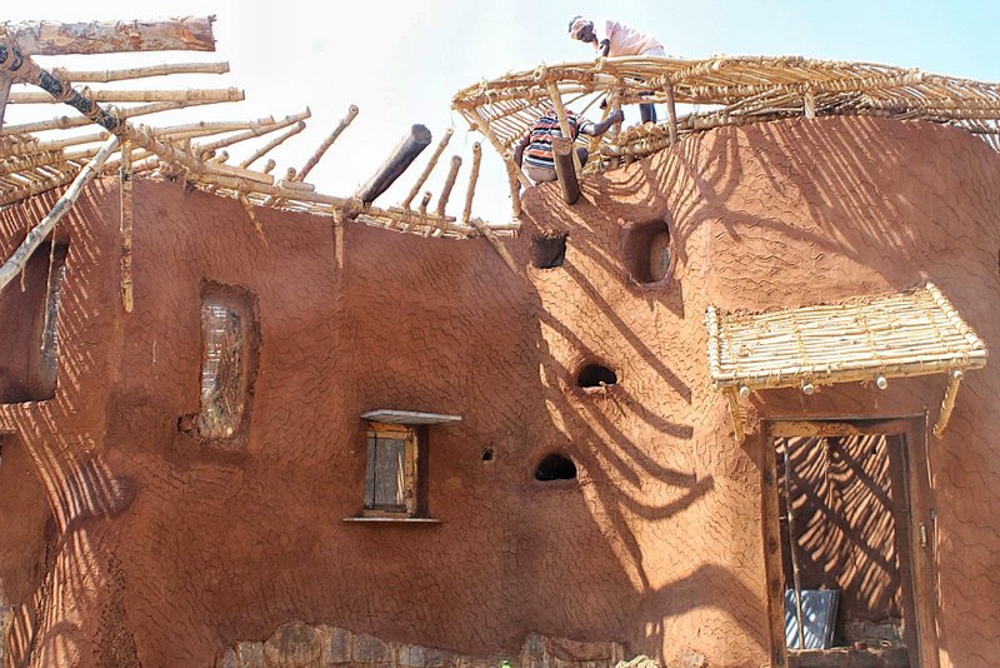
A building’s walls are like the skin on your body – they are porous and have a breathing quality, says Biju. Only the buildings of olden times had such walls and construction; they kept the building naturally cool. “Today’s buildings don’t have such a quality, and instead make the interiors of the building hot. Enormous power is used through air-conditioning to keep it cool.”
Hand in hand with nature
Another focus area for Thannal is the communion of plants and buildings. “In our research, we have found that plants have a lot of importance in buildings. The bark and sap of plants can be used in various ways in the construction of a building.” And there is no bigger example for this than Biju’s own abode, which is an earthbag home. “It has about 12 varieties of herbal ingredients in it. So the air that passes through the walls is diluted with the essence of these herbs.” Biju points out that cement companies today are one of the major sources of air pollution. The paints used nowadays are also mixed with toxins that are dangerous to people’s health.

Biju says that there are a lot of positive changes happening in India and with the younger generation of architects for the past ten years. “The green movement in agriculture – organic farming, is coming along very well, what with the involvement of renowned people such as the actor, Sreenivasan. A lot of farmers come to meet us.” But at the same time, Biju rues another fact. “What is saddening is that villagers are lured by the urban living styles and moving towards it, discarding their natural means of life. So we are building free homes for them to bring them back to it and make them realise the importance of it.”
Towards growing more villages
Biju talks about his philosophy at Thannal. “We believe that instead of growing more towns, we should grow more villages because today, the times have changed, and one need not live in an urban scenario for sustenance. Villages and pure natural building should thrive.”
At Thannal, which Biju set up with his wife Sindhu, they give a lot of prominence to research and documentation. With the aim of growing more natural builders, they hold workshops to disperse the awareness. “We have created a hub called Natural Builders of India. Those who pass out have to complete a project in two years that is completely based on natural building. I also bring two-three projects as there are no examples for students in India. And at the end of the project, each student has to bring another student to enroll in it. So according to our calculation, the natural building movement is going to bloom in five years’ time in India. ”

Biju takes up only a maximum of two or three projects in a year. Receiving volunteers from all over India, their income is only from the workshops that they hold, claims Biju. A naturally built home of 500-1,000sq ft can be completed in four to five months. The costs, naturally, are always lower than conventionally built structures.
Thannal works across India and they choose villages after extensive studies. “In our travels, we discovered that all these people who are knowledgeable about natural building in the villages, are all 70-80 years old. We are trying to revive their knowledge, for which, we are living with a master mason every year. We use local people from the particular areas, as that way, there is exchange of information.”
Biju is an avid traveller and a devotee of Ramana Maharshi. Asked why he chose to settle in Thiruvannamalai, Biju says, “It is a place of gurus and a place for self-enquiry. It is one among the Pancha Bhoota Sthalam, and is symbolic of fire. And all gurus have taught that one should build mud houses.”
The post In the Lap of the Earth appeared first on FWD Life | The Premium Lifestyle Magazine |.
]]>